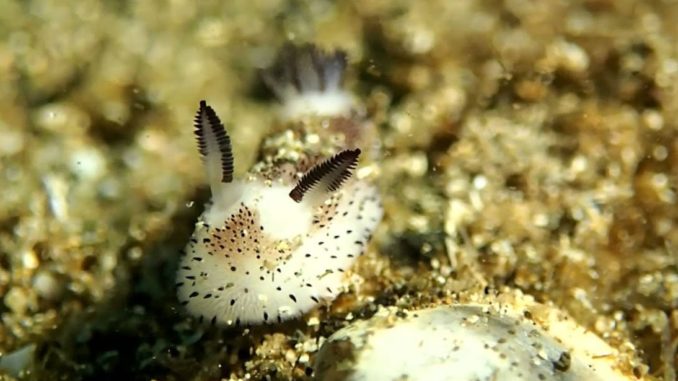
The ocean is a fascinating and mysterious place. It is full of beautiful, yet sometimes dangerous creatures. In the deep blue sea, there is still a lot to explore, and the sea bunnies are probably one of the most curious species since they got a surge in popularity around the year 2015. Sea animals can always give us a surprise when we discover them, just like this little adorable creature called Sea bunny. If you had any questions about these cute little fellas, do not look any further, you are at the right place! Let’s discover together.
What is the Sea Bunny?
Sea bunnies are a type of sea slug which belongs to nudibranchs, a group of mollusks. They are very small, puffy, and have little cute ears. These little creatures are categorized as Jorunna Parva species, described by Kikutaro Baba, a Japanese marine biologist. Speaking of how tiny they are, most people are surprised to learn that most of them are no longer than an inch, which is approximately around 2.5 centimeters long. Their backs are covered with lots of small rods which make them look like they have fluffy fur.
Of course, a remarkable feature we can’t ignore is their wiggly tiny ears. As Dr. Craig McClain describes on Deep Sea News, their small tiny ears are rhinophores, which means they are organs that allow them to perceive changes in currents and detect chemicals around them. Moreover, the sea rabbit cannot see. That’s right, the poor thing has no eyes, nor does it have any visual system. Therefore, it can only feel its surroundings with the help of its ears and fur. Thanks to their efficiency, they can locate their mates over great distances.
What’s the color of a Sea Bunny?
Sea bunnies or sea slugs are normally yellow with black spots while rhinophores and others are white and greenish. That said, discussions about whether these various changes of colors reflect different species are currently being debated in the scientific community.
In all cases, the cute sea animal can be very stunning and colorful, particularly the ones located in coral shoals. Although they are pleasant to look at, sea bunnies are put in some aquariums for a reason. Indeed, sea slugs can also help limit the level of algae contained in the aquarium. In addition, this outstanding characteristic can be a warning sign to predators of how poisonous they are as well.
Where can I find a Sea Bunny?
If you are wondering if you can buy a seabunny and keep it as a pet, the quick answer is unfortunately no. The life of a sea bunny is pretty short, they live up to 1 year at most.
On top of their very short time on planet earth, they are quite toxic and have stringers all around them. In other words, you’re better off staying classic with a redfish, or anything for that matter.
On the wild side of things, sea bunnies are found around various countries, most frequently:
- Near the coast of Japan
- In the Philippines
- In the Indian ocean
Are Sea Bunnies dangerous?
Sea slug specialist, Ángel Valdés of Pomona State Polytechnic University of California, said that sea bunnies can live for just a few months to a year. Fortunately for them, they are very dangerous and toxic, and these peculiar qualities can save them from hungry predators.
To put it plainly, these creatures are for your eyes only. You may adore these puffy little creatures, but it would be better not to hurt yourself by touching them!
How do Sea bunnies reproduce?
The sea bunnies are hermaphrodites, which means they are capable of generating sperm and eggs since they are both male and female. However, they cannot regenerate by themselves, they still need another slug for fertilizing.
Once they found their partner, they will mate by exchanging sperm. One species of the rabbit of the sea will even cut its own penis, which will grow back within 24 hours! By doing so, they are preventing other sea bunnies to mate with their partner. Talk about jealousy!
Features of other Sea Slugs: the gastropod mollusks
Sea slugs like marine gastropod mollusks are known for their exceptional colors, outstanding shape, and soft-body. So far, there are more than 3,000 slug species that have been discovered, and it’s believed that there are even more yet to be found.
The gastropod mollusks are known as aquatic snails, and their evolution is quite interesting. Following their larval stage, these snail-like slugs will lose their shell and acquire new characteristics through their evolution. All water depths are suitable for them, but they can generally be found in shallow areas like rock pools.
In conclusion, if one day you have the chance to swim near coral shoals located in one of the previously mentioned countries, don’t miss the opportunity to see these little adorable creatures! Until then, you’ll have to content yourself with some Twitter pictures.

Leave a Reply